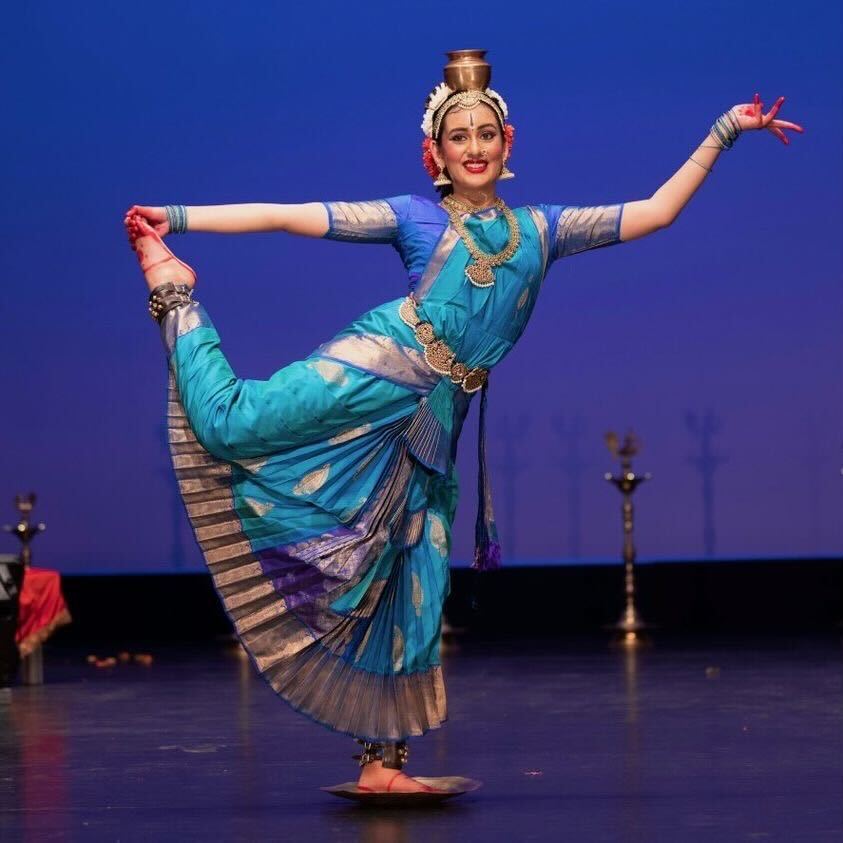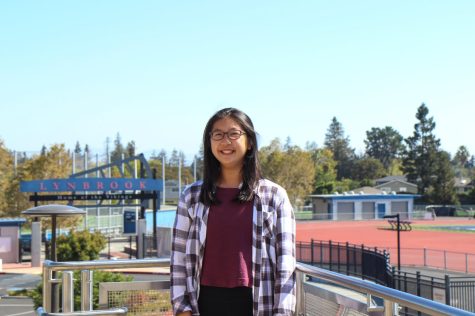Exploring cultural background through Indian Classical Dance
Photo used with permission from Sanika Mithbaokar
Indian classical dancer Mithbaokar performs for her graduation concert.
November 7, 2022
The rhythmic beat of the tabla, rings of the sitar and melody of a harmonium starts a dancer’s varnam. The story of Hindu gods unfolds with intricate footwork and distinct hand gestures symbolizing concepts and characters. For the Indian classical dancers of Lynbrook, each performance is a culmination of intense practice and discipline.
Bringing cultural traditions from India to America, classical dance teachers communicate ancient stories and keep traditional forms of art alive by disseminating them to American-born children. In addition to the more dominant Tamil and Telugu dance styles such as Bharatanatyam and Kuchipudi, other dancers also specialize in styles like Odissi and Kathak, respectively originating from North India and the state of Odisha. Each style of dance has nuances specific to regions of India, with students often registering for classes in the style derived from their home town or state.
“Different high schools in the area have a mix of students who study different styles, which is what makes classical art forms so fascinating,” American-Indo Student Association officer and sophomore Athreya Iyer said.
Beginners start with the basics and learn individual steps called adavus for Bharatanatyam, hand gestures, called hastas and motions representing people, gods and other significant objects. As dancers’ styles mature and perfect steps, more emphasis is placed on expression and style.
“In the beginning, the focus was on fundamentals,” Mithbaokar said. “Later, I was introduced to choreographic items, expressions and visual storytelling; it became more nuanced as I progressed through my dance journey.”
Musical accompaniments often include live orchestra, composed of violin, Indian percussion and traditional instruments such as the sitar and tabla. South Indian ICDs dance to Carnatic music, while North Indian classical dance is to the Northern style of music, called Hindustani. India hosts a diverse array of languages that vary region to region, and as such, the music is sung in different languages. However, the structure of the dance style is meant to complement singing that should narrate the story, which often sets students who are unable to understand the lyrics at a disadvantage.
A milestone performance for Indian classical dancers is their graduation concert — called the Arangetram for Bharatanatyam and Rangepravesam for Kuchipudi.
“Arangetram literally means to ascend the stage,” Bharatanatyam dancer and senior Netra Ramanatham said. “You make your solo debut as a dancer, though some choose to continue to learn more after.”
These performances feature various traditional routines in a two to three hour long solo concert. Routines range from five to seven minute bursts of energy to 20-30 minute long routines with multiple breaks. The central piece of Arangetrams and Rangapravesams, the varnam, consists of the solo dancer presenting a full story with multiple sections and contrasting characters.
Preparing for a solo graduation concert comes with challenges. Senior Aarthi Gopalakrishnan faced multiple injuries throughout her dance journey, making it difficult to catch up with the skill set required.
“I broke my leg multiple times,” Gopalakrishnan said. “It was hard getting back into dance and catching up especially since I was out for almost a year, but I was able to work my skills back up in the end.”
For senior Sanika Mithbaokar, a Kuchipudi dancer, the language barrier made it difficult to understand her classmates’ conversations and master classes from famous teachers in India who only spoke Telugu.
“I’m the one of the only dancers at the studio who doesn’t speak the Telugu language,” Mithbaokar said. “It’s interesting to learn the art form from an outsider’s perspective.”
Still, with years of hard work devoted to Indian classical dance, by the time dancers step onstage to debut themselves as official dancers, they are confident to present their pinnacle performance.
Reaching the landmark Arangetram and Rangapravesam presentations, dancers’ dedication to their art form transforms them to become not only more skilled dancers, but more hardworking students. For many dancers, Indian classical dance is also a way to connect back to their identity and learn more about their cultural background.
“My appreciation for Indian classical dance has definitely increased,” Mithbaokar said. “Watching pieces over seven minutes long seems rather tedious, but once you experience firsthand the hard work and discipline required to perform, it’s very impressive and enjoyable to watch.”




























































